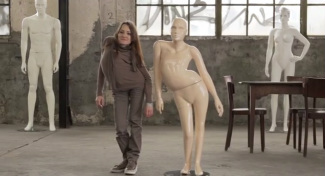 Mannequins are rebuilt in this Pro Infirmis video on disability Mannequins are rebuilt in this Pro Infirmis video on disability Tags: art/music, bodies, consumption/consumerism, culture, disability, discourse/language, inequality, knowledge, disability porn, stereotypes, subtitles/CC, 00 to 05 mins Year: 2013 Length: 4:29 Access: YouTube Summary: In this four minute video from the Swiss company Pro Infirmis, five people with visible disabilities arrive at an artist's studio. After introductions, the artist begins measuring the dimensions of each person's body. His team then begins sawing into a collection of store mannequins, and once dismembered, the mannequins are reconstructed so they more closely resemble the body designs of the artist's new models. After some polish, the new mannequins are unveiled and eventually displayed in stores along one of Zurich's main streets, just in time for the International Day of Persons with Disabilities. The project's title is a rhetorical question and a command, "Because Who Is Perfect? Get Closer." Indeed, no one is perfectly able-bodied. Whether visible or invisible, on some level it is true that all bodies can be said to have "malfunctions," but the deeper reason no one is perfect is because the idea of what constitutes perfection is itself elusive. Yet, most people go about their daily lives seduced by the illusion that distinguishing "able-bodied" people from "disabled" people is as straightforward as distinguishing apples from oranges. For instance, there is a Thor fandom that celebrates Chris Hemsworth's shirtless body as the epitome of perfection. Mall shoppers too routinely evaluate clothing for themselves and others by first seeing it draped over what is supposed to be a mold of a perfect body. Capitalist institutions, from the Hollywood film industry to clothing retailers, routinely place the able-bodied ideal on a pedestal, implicitly exalting a particular type of body as the standard by which all bodies must be evaluated, and it is on this point that the Pro Infirmis video is both refreshing and subversive, for it takes what are assumed to be imperfect bodies and places them in a space typically reserved for perfect bodies. These new mannequins of unfamiliar proportions stop passersby in their tracks and encourage them to reconsider the types of bodies that belong in storefronts, but while the video captures a useful disruption in the usual discourse on bodies, in my view it fails to truly provoke onlookers to reassess their casual assumptions about bodies as either working or broken, and as either worthy or unworthy of representation. No, the video leaves this binary cultural logic unscathed. For instance, one finds in the video that "able-bodied" mannequins are the clean slate from which "disabled" mannequins are born. There is a manufacturing montage that puts to rest any radical doubts as to whether these two species of mannequin have anything in common. Finally, when displayed in the Zurich storefronts, the altered mannequins remain almost hermetically sealed from the original mannequins, which have been scuttled away for the event. To truly "get closer," as the video commands us to do, I think it is important to collapse this casual, Manichean distinction between the able-bodied and the disabled. A truly radical video might instead show the old mannequins displayed alongside the new ones, and the displays would be left in place long after the International Day of Persons with Disabilities was over. Submitted By: Lester Andrist
2 Comments
 Eugenic thinking is woven into the fabric of American society Eugenic thinking is woven into the fabric of American society Tags: biology, bodies, class, crime/law/deviance, demography/population, disability, discourse/language, gender, health/medicine, immigration/citizenship, intersectionality, lgbtq, nationalism, prejudice/discrimination, race/ethnicity, science/technology, sex/sexuality, institutionalized discrimination, eugenics, subtitles/CC, 11 to 20 mins, 21 to 60 mins Year: 2012; 2013 Length: 15:05; 17:25 Access: YouTube (clip 1; clip 2) Summary: The eugenics movement has a long history in the United States. A popular misconception is that eugenic thinking and the associated practices were uniformly abandoned after the Third Reich's genocidal intentions were laid bare at the end of the Second World War. In point of fact, eugenic ideologies and practices have been recalcitrant features of American social institutions right up until the present day. In her book American Eugenics: Race, Queer Anatomy, and the Science of Nationalism, Nancy Ordover remarks on the resiliency of the ideology, "Eugenics..is a scavenger ideology, exploiting and reinforcing anxieties over race, gender, sexuality, and class and bringing them into the service of nationalism, white supremacy, and heterosexism." In earlier decades eugenicists could openly discuss stemming the "overflow" of immigration, as an effort to "dry up...the streams that feed the torrent of defective and degenerate protoplasm." The language of eugenics would eventually change, but the core ideas have remained; socially deviant groups and socially undesirable conditions are seen by eugenicists as biologically determined. The above clips are news stories, which draw attention to two recent manifestations of eugenics policy. The first clip chronicles the experience of an African American woman who was legally sterilized in the late 1960s in North Carolina after giving birth to her first son. The clip reports that between 1929 and 1974 approximately 7,600 North Carolinians were sterilized for a host of dubious reasons, from "feeble-mindedness" to "promiscuity." But while North Carolina's victims included men, women, and children, Ordover's research points out that the victims were overwhelmingly women and African American (by 1964 African Americans composed 65% of all women sterilized in the state). The first clip, then, is an example of how eugenics became institutionalized with the force of law, but the second news clip examines a case of institutionalized eugenics in California, which existed without the explicit consent of law. In 1909 California became the third state to pass a compulsory sterilization law, allowing prisons and other institutions to sterilize "moral degenerates" and "sexual perverts showing hereditary degeneracy." By 1979, when the law was finally repealed, the state had already sterilized as many as 20,000 people, or about one-third of the total number of such victims throughout the United States. One learns from the news clip that between 2006 and 2010, 148 women were sterilized by doctors who continued to be guided by the precepts of their eugenic ideology. Submitted By: Lester Andrist 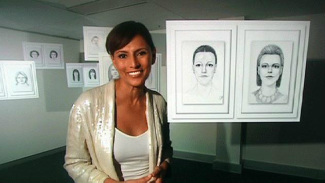 Dove reinscribes the beauty standard it attempts to critique Dove reinscribes the beauty standard it attempts to critique Tags: bodies, emotion/desire, gender, marketing/brands, media, beauty standards, representation, subtitles/CC, 00 to 05 mins, 06 to 10 mins Year: 2013 Length: 3:01; 6:36 Access: YouTube (clip 1; clip 2) Summary: For some time now, advertisers have employed a powerful strategy to peddle their wares. They sell men and women on the idea that a woman's value and worth is bound up with her beauty, then, with the aid of lighting, cosmetics, and digital technology, the advertisers construct an ideal beauty standard that is forever out of reach. The media landscape is populated with images of women with flawless skin, perfect postures, and perky busts—a mirage that perpetually lies on the horizon. Dove's "real beauty" campaign claims to address the harm of encouraging women to base their self worth on something which is unattainable by design; yet a critical analysis of the campaign reveals that it is reinforcing the very issue it claims to critique. In one of the campaign's latest videos (there is a short version and a long version), an FBI trained forensic artist sketches a number of women based on their own descriptions of themselves, then the artist sketches the same women based on how others describe them. The finished sketches are hung side by side, and the women subjects examine the difference. Each is shocked to discover that others apparently describe them as more beautiful than they describe themselves. Laura Stampler's article for Business Insider provides a nice summary of all that is wrong with the ad, but it is worth mentioning two of the more common critiques here. First, the video focuses on a small group of women, who are mostly thin, mostly young (the oldest woman is 40), and mostly white (In the six minute clip, people of color are onscreen for less than 10 seconds). Any campaign that seeks to lift the veil on the harm of unrealistic beauty standards would do well to stop perpetuating the practice of excluding fat women, old women, and women of color. Second, while the video is wrapped in a heartwarming message that women are more beautiful than they realize, the deeper message is still that physical beauty can be the basis for true happiness and satisfaction. At about the 5:10 mark, the sketch artist asks one woman, "Do you think you're more beautiful than you say?" She replies, "Yeah," How different the message of the video would be if instead she flipped the script and asked the artist, "Why should my sense of being whole and satisfied hinge so much on my physical appearance in the first place?" Submitted By: Jeehye Kang 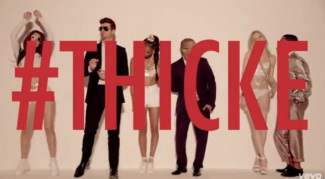 Robin Thicke's video sparked a dialogue about rape culture. Robin Thicke's video sparked a dialogue about rape culture. Tags: bodies, gender, media, sex/sexuality, violence, music video, rape culture, sexual violence, 00 to 05 mins Year: 2013 Length: 4:32 Access: YouTube Summary: [Trigger Warning for sexual assault] As defined in Transforming a Rape Culture, "A rape culture is a complex of beliefs that encourages male sexual aggression and supports violence against women." Robin Thicke's huge summer hit, Blurred Lines (it reached #1 in 14 countries), has been widely discussed as an example of rape culture. In fact, it has been so controversial that at least 5 universities in the UK have banned the song. They argued the song objectifies women, and "is a man suggesting that there are ‘blurred lines’ when it comes to sexual consent" ; the ban is meant to “end rape culture ... on campus.” While Thicke states he wrote the song about his wife (who nonetheless can be raped by their husbands), and that the lyrics have been misconstrued, the lyrics are strikingly similar to the words rapists have often told their victims. This argument was made in an excellent blog post by Sezin Koehler at SocImages, where Koehler linked the song lyrics to testimonies from Project Unbreakable, an online photo exhibit of "sexual assault survivors where they are photographed holding a poster with a quote from their attacker." For example, the main lyrics (repeated 18 times) of "I know you want it" is a line given to many victims, and implies that women really want sex when they say they do not. As he sings "Nothing like your last guy, he too square for you. He don’t smack your ass and pull your hair like that," Thicke's misogynistic fantasy conveys that "a woman doesn’t want a 'square' who’ll treat her like a human being and with respect" (Koehler). Even if viewers give Thicke the benefit of the doubt concerning the intention of his lyrics, one still has to consider the effects of the video's message on its audience. As this video excerpt from Dreamworlds 3 illustrates, music videos (like other forms of popular culture) socialize us into prescribed gender roles regarding sexuality. And in a video where the women are all scantily clad (or nude in the unedited version of the video), and never speak, they reproduce a view of women as passive objects meant to fulfill men's fantasies. Meanwhile, men are trained to think of themselves as dominating figures meant to aggressively pursue what they desire, and to disregard women's stated sexual preferences. Viewers may also be interested in the many parodies of the video, including the Law Revue Girls' "Defined Lines" where they respond “Yeah we don’t want it/ It’s chauvinistic/ You’re such a bigot ... You can't just grab me/ That's a sex crime.” Submitted By: Paul Dean 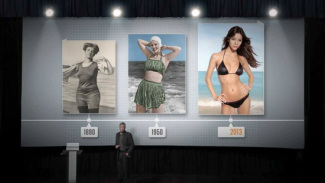 Can men control their reactions to attractive women? Can men control their reactions to attractive women? Tags: bodies, gender, marketing/brands, media, sex/sexuality, commercial, rape culture, 00 to 05 mins Year: 2013 Length: 0:32 Access: YouTube Summary: Beyond simply objectifying women, this commercial for the Axe Chill Collection presumes a relationship between female attractiveness and men's uncontrollable responses. The message is clear: because girls are hot, guys lose their "cool" and, therefore, are unable to control themselves. The ad suggests that their product "helps guys keep their cool before it's too late" but what is implied here? Before it's too late for what? While the commercial depicts men having accidents (e.g. crashing into a car), the obvious sexualization seems to imply that men would also act on their sexual impulses in an inappropriate manner. Again, the message is clear: men are not to blame for these reactions; instead the blame is on women and their "hotness." This attribution of blame, along with the overall sexual objectification of women, are key dimensions of rape culture, which encompasses a set of values and beliefs that legitimate male sexual aggression and rape. Viewers may reflect on the degree to which such messages, also found in music videos and throughout our culture, shape men's actions and attitudes about sex and gender. Submitted By: Anonymous 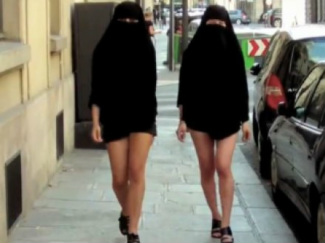 The NiqaBitch video protests France's burqa ban The NiqaBitch video protests France's burqa ban Tags: art/music, bodies, crime/law/deviance, gender, immigration/citizenship, inequality, prejudice/discrimination, race/ethnicity, religion, sex/sexuality, burqa, burqa ban, chandra talpade mohanty, femininity, feminism, male gaze, niqa, postcolonialism, racism, 00 to 05 mins Year: 2010 Length: 2:17 Access: YouTube Summary: This clip features a protest against France's recent Burqa ban, which went into force in 2011. The new law stipulates that anyone caught wearing the niqab or burqa in public could face a fine of €150, or be forced to take lessons in French citizenship. The performance of the two women in the video challenges the resistance/subordination binary, which typically frames discussions about what it means when non-Western women don the veil. By sexualizing their veiled bodies, the women challenge ideas about whether wearing a veil is necessarily an expression of women's oppression, just as it challenges whether wearing hot pants and high heels is necessarily an expression of women's ability to resist oppression (Note that the ban went into force after the video was made). Moreover, by performing a sexualized femininity they are apparently able to navigate the streets of Paris without being disciplined, and their short walk raises a number of provocative questions. First, to what extent are the two women able to “break” the law because they have garnered the approval of the heterosexual male gaze? How might people react to these women if they did not fit the archetype of attractive females? This clip provides an excellent window into Chandra Mohanty's acclaimed paper “Under Western Eyes.” Mohanty takes issue with the way that Western feminists assume that wearing the veil is a symbol of oppression and fail to give a voice to the women who wear these clothes. It is unfair for Westerners to assume that the way they themselves dress is a symbol of empowerment without unpacking the systems of patriarchy that inform Western modes of dress. Viewers can also consider whether Westerners have the authority to make judgments about the way non-Westerners dress. Does the government have the right to create laws that ban certain styles of dress? If so, why aren't the religious symbol laws enforced for nuns who wear veils? Submitted By: Pat Louie 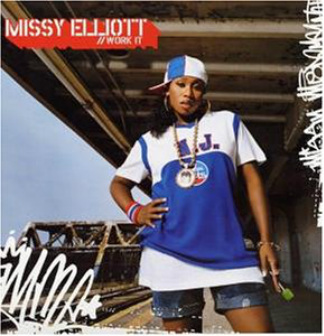 Missy Elliott's "Work It" celebrates black women’s sexuality. Tags: art/music, bodies, gender, intersectionality, race/ethnicity, sex/sexuality, feminism, rap music, 00 to 05 mins Year: 2007 Length: 4:25 Access: YouTube Summary: In this music video, rap artist Missy Elliott fills the void in the discussion of pro-sex black feminism. Historically, black voices have been excluded from the sex-positive feminist revolution. In part, the marginalization of black voices is a product of a colonial past that has stereotyped the black body as always already hypersexual (see Saarjite Baartman). As a result, black academics have taken up a “politics of silence” to resist these stereotypes. A potential site to begin the discussion of a pro-sex black feminist discourse is rap music (Skeggs 1993). The female rappers “talk back, talk black” (hooks 1989) to the colonialist system that attempts to contain the expression of women’s sexuality. In Missy Elliott’s hit song “Work It” (lyrics here), she expresses her own kind of sexuality, effectively creating a dialogue for us to rethink our analyses of black women’s sexuality. How does Missy (re)claim her body as a site of desire and empowerment? How does Missy establish herself as an active sexual subject in the song? Does this challenge patriarchal notions of female sexuality? How does she subvert traditional understandings of the black body? Does Missy challenge conventional (white) beauty standards (i.e. celebration of hips, large butt etc)? How, if at all, does Missy’s music differ from other female artists and, specifically, other popular women rappers? Does Missy create a language for other black women to start understanding and theorizing about their sexual experiences? Can we understand the black female body as separate from representations of Saartje Baartman? How does this enhance our understanding of active black female desire? Do you think that rap music is a legitimate medium to begin theorizing about black sexual scripts? Submitted By: Pat Louie 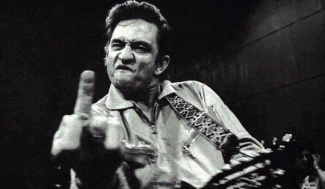 Insult gestures, including the middle finger, vary across cultures. Tags: bodies, culture, discourse/language, cultural relativity, gestures, non-material culture, 06 to 10 mins Year: 1994 Length: 9:06 Access: YouTube Summary: Culture is a fundamental concept within sociology and anthropology. Culture includes the ideas, values, practices, and material objects that enable human cooperation within groups and societies. Symbolic culture includes non-material forms of culture such as language, which consists of meaningful symbols that enable communication. Beyond written and spoken language, we also communicate via gestures, or body language. This excerpt from the BBC's Human Animal series discusses gestures and their meanings in different cultures around the world. The video illustrates many common gestures (e.g. the use of the middle finger, head nod, thumbs up, and handshake) and documents the diverse messages these gestures send in different countries. It also draws upon certain ideas, such as the notion that someone is "crazy", and illustrates the various gestures used to communicate this same message. Viewers may find this video useful in introductory classes to illustrate one dimension of culture, and how it varies throughout the world. Submitted By: omowbray  Cultures have unique ideas of beauty, such as long neck length. Tags: bodies, culture, emotion/desire, gender, multiculturalism, sex/sexuality, social construction, cultural relativity, ideal beauty, 06 to 10 mins Year: 1997 Length: 9:56 Access: YouTube Summary: What is beauty? Is beauty an objective feature or is it in the "eye of the beholder"? According to a 2012 competition hosted by Lorraine Cosmetics, the most "natural" and "objectively" beautiful woman was determined "scientifically" through such measures as facial symmetry. While the incident ignited a public debate about the ability to "scientifically" measure beauty, a review of the research shows that people's sense of beauty varies across time and culture. In this video, famous anthropologist Desmond Morris notes that while there is a "biological language of sex" in which people are attracted to others through physical characteristics, this process is mediated through a "complex cultural adventure." Throughout cultures across the world, people exaggerate the features of beauty that their culture deems attractive. A study looking at beauty across 200 different cultures found hardly any qualities that existed across all cultures. The video documents several of these physical features on women, including neck length, foot size, and lip size. It illustrates the cultural evaluation of beauty and the (often painful) techniques used to achieve the unnaturally extreme forms of beauty. What notions of female beauty in your culture might be similar to or different from conceptions of beauty found in the video? Viewers may also note the heteronormativity of the video, in which beauty is explicitly stated to attract members of the opposite sex. Submitted By: omowbray 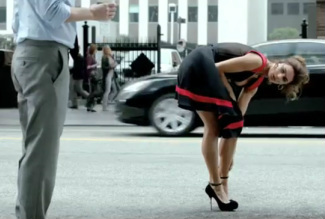 Advertisement for the Fiat 500 Abarth Advertisement for the Fiat 500 Abarth
Tags: bodies, consumption/consumerism, gender, marketing/brands, media, sex/sexuality, representation, sexual
objectification, 00 to 05 mins Year: 2011 Length: 1:00 Access: YouTube Summary: In this television advertisement for the Fiat 500 Abarth, a man has a passionate encounter with a seductive Italian woman, who turns out to be a car. Literally. I use this clip to teach the concept of sexual objectification. First, I have my students read Caroline Heldman's essay on how to identify sexual objectification in media images. In this essay, Heldman defines the term as follows: "If objectification is the process of representing or treating a person like an object, then sexual objectification is the process of representing or treating a person like a sex object, one that serves another’s sexual pleasure." I then screen this Fiat commercial in class and have students deconstruct it, using Heldman's 7-item Sex Object Test (SOT) as a resource to guide our analysis. This approach gives us a lot to talk about, including the way the woman in the advertisement stands in for an object, the interchangeability of sex objects (she only speaks Italian and appears to be incomprehensible to the fantasizer), the way in which her body is literally branded with the Abarth logo, and the ejaculatory imagery. Instructors can go on to discuss the harm associated with sexual objectification, which Heldman addresses in Part 2 of her series on sexual objectification, and which is also discussed in the films Killing Us Softly and Miss Representation. Submitted By: Michelle Sandhoff |
Tags
All
.
Got any videos?
Are you finding useful videos for your classes? Do you have good videos you use in your own classes? Please consider submitting your videos here and helping us build our database!
|
 RSS Feed
RSS Feed
